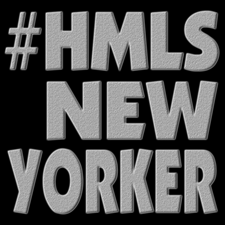“New York, a city whose development had been so decisively shaped by slavery. In 1860, the city’s 12,472 blacks were widely dispersed among eight different wards, in enclaves that, while often separate, were not sharply demarcated in the manner of segregated ghettos of twentieth-century Northern cities. Black New Yorkers’ choice of where to live was […]
Read the rest of this entry »Black History Fact Of The Day
“Profits from slave-produced cotton propelled New York’s financial rise, while political and literary ties to Southern elites expanded the city’s influence. The paradox of slavery in a free city turned out to have been essential to the making of the modern metropolis.” -From, “Slavery In New York” Tweet
Read the rest of this entry »Black History Fact Of The Day
“The federal census of 1850 reported 13,815 blacks in Manhattan; five years later, the New York State census recorded fewer than 12,000 African Americans in the city. The federal Fugitive Slave Law likely inspired hundreds of the city’s African American residents to leave for safety elsewhere.” -From, “Slavery In New York” Tweet
Read the rest of this entry »Black History Fact Of The Day
“New York City’s Black population fell by 15 percent in the five years after the passage of the Fugitive Slave Act. Many went to Canada, but it was African emigration that attracted the largest attention.” -From, “Slavery In New York” Tweet
Read the rest of this entry »A Picture Is Worth A Thousand Words Pic Of The Week
Harlem, NYC. Tweet
Read the rest of this entry »The History Of The Black Vote: Part 1
“The first premise of the argument to deny black New Yorkers the vote asserted that African-Americans were by nature incapable of responsibly exercises this precious right of self-rule. ‘The minds of the blacks are not competent to vote,’ argued one [New York State Constitutional] Convention member. ‘They are too ignorant to know whether their vote […]
Read the rest of this entry »Quote Of The Day
“African Americans had long constituted the core workforce in New York City and its hinterland. In 1771 there were roughly twenty-one thousand African Americans in the region around New York City, virtually all enslaved- and many of them were the children and grandchildren of slaves.” -From, “Slavery In New York” Tweet
Read the rest of this entry »Black History Fact Of The Day: How NYC’s Wall Street Got Its Name
In March 1653, Peter Stuyvesant, the director of the slave-trading Dutch West India Company and the Director-General of New Netherland, now known as New York, ordered slaves to build blockades to serve as protective barriers for the area of lower Manhattan. Stuyvesant reportedly demanded that the log-made barricade be “12 feet long, 18 inches in […]
Read the rest of this entry »Black History Fact Of The Day: The African American Man Who Founded Bushwick, Brooklyn
In 1661, a man who was known as “Francisco the Negro” helped to found what is now Bushwick, Brooklyn. He was one of the 23 founders of that area. In 1661, Bushwick was known as Boswijk. [Bibliography: Slavery In New York] Tweet
Read the rest of this entry »When Washington Square Park Was Owned By African Americans
Recently, burial vaults were discovered underneath Washington Square Park. Archaeologists are reportedly still trying to determine the exact origins of the vaults; however, they claim that they believe the vaults date back to the 19th century. Way before the 19th century, African Americans who were brought to the United States as chattel, owned approximately 130 […]
Read the rest of this entry »

